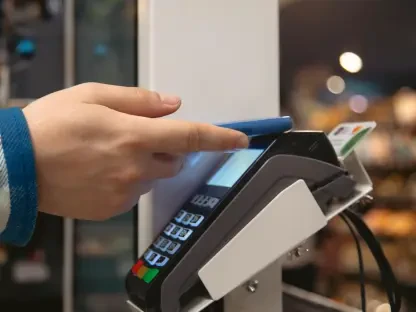The retail industry is undergoing rapid transformation, driven by technological advancements, shifting consumer preferences, and economic pressures. This week, several major players in the retail sector have made headlines with their strategic moves and challenges. From Adidas’ legal scrutiny to Amazon’s expansion into automotive sales, the landscape is evolving quickly. But are these retail giants adapting fast enough to keep pace with market changes?
Adidas Under Investigation
Compliance and Legal Challenges
Adidas, a leading name in sportswear, faced a significant challenge this week as its headquarters in Herzogenaurach, Germany, were searched due to an investigation into import customs and tax regulations. The scrutiny, covering a period from October 2019 to August 2023, has put the company under the spotlight. Despite the investigation, Adidas has emphasized its cooperation with authorities and confidence that the financial impact will be minimal. The company is actively engaging with customs authorities to address issues arising from varying interpretations of German and European law, highlighting its commitment to legal compliance.
The investigation into Adidas raises questions about the potential impact on its brand and operations. While the company maintains that the financial repercussions will be limited, the scrutiny could affect its reputation and operational efficiency. Adidas’ proactive approach in dealing with the authorities and prioritizing legal compliance is crucial in mitigating any long-term damage. The situation underscores the importance of robust compliance mechanisms in navigating complex regulatory environments, ensuring that Adidas can maintain its integrity and business continuity amidst legal challenges.
Impact on Brand and Operations
The scrutiny Adidas is under creates a precarious situation for the sportswear giant at a time when maintaining a strong brand image is critical. Although the company is confident that the financial fallout will be minimal, this ongoing investigation can still tarnish its reputation among consumers and business partners. Any negative perception developed during this period, regardless of the eventual financial outcomes, must be managed carefully to avoid eroding long-standing brand equity.
Additionally, this investigation poses operational risks, potentially causing disruptions in their supply chain, delays in product launches, and reallocation of resources to manage legal defenses. It becomes imperative for Adidas to not only comply but also communicate transparently with its stakeholders to preserve trust and confidence. This entire episode serves as a stark reminder of the necessity for global enterprises to have exhaustive compliance frameworks that anticipate and mitigate regulatory risks, especially in varied international markets like those covered by German and European laws.
Puma’s Creative Hub
Fostering Innovation
In a bid to enhance creativity and collaboration, Puma has launched Studio48 at its Herzogenaurach headquarters. This creative hub is equipped with facilities such as a 3D printing area, sewing machines, printing and embroidering setups, and a photo studio. Studio48 aims to foster innovation among Puma’s designers, contributing to the company’s goal of sustainable growth and brand enhancement. The initiative reflects Puma’s commitment to leveraging creativity as a key driver of its business strategy.
Studio48 is more than just another corporate investment; it embodies Puma’s vision of a future where design and innovation are at the forefront. By integrating advanced tools and technologies in this creative hub, Puma is empowering its designers to experiment, thus pushing the boundaries of product development. This initiative is expected to not only spur in-house creativity but also attract top talent eager to be part of an environment that celebrates and nurtures innovation.
Expanding Creative Spaces
Puma’s plans to open a similar creative hub in Los Angeles next year further demonstrate its dedication to fostering innovation. By providing spaces for workshops, events, and meetings with external partners, Puma is positioning itself as a leader in creative collaboration within the sportswear industry. These hubs are expected to play a significant role in driving the company’s design and product development efforts, ensuring that Puma remains at the forefront of industry trends.
By expanding to other key locations like Los Angeles, Puma is strategically situating itself within global creative hotspots, facilitating a continuous exchange of innovative ideas. This network of creative hubs aspires not only to synergize internal workflows but also to catalyze co-creation with external partners, fostering a culture of open-source creativity. This initiative underscores Puma’s commitment to staying ahead in a competitive market by embedding design thinking and sustainability at the core of its operations. As these hubs become operational, the cumulative impact on Puma’s product portfolio and brand identity could be transformative, solidifying its stance as an industry vanguard.
Amazon’s Automotive Expansion
Simplifying Car Buying
Amazon has made a bold move by adding cars to its extensive product range through a partnership with Hyundai. This initiative allows shoppers in 48 U.S. metropolitan areas to buy cars entirely online, from trade-ins to financing and vehicle pick-up scheduling. Amazon’s entry into the automotive market is designed to simplify and convenience the car-buying process, reflecting a broader trend towards integrating high-value products into digital retail environments.
The introduction of cars to Amazon’s platform showcases the company’s unrivaled ability to diversify and innovate within the digital retail space. By offering an end-to-end car-buying experience online, Amazon is addressing common consumer pain points traditionally associated with car dealerships. The streamlined process—from appraising trade-ins to securing financing and scheduling pickups—epitomizes Amazon’s commitment to enhancing customer ease and satisfaction. This move also signifies the potential for future integrations of other high-value products in Amazon’s ecosystem, setting a new industry standard for digital commerce platforms to follow.
Future Expansion Plans
The company plans to expand this program to include more dealerships, brands, and cities in the near future. Amazon’s strategy to offer a broader range of products while maintaining the ease and efficiency its customers expect is evident in this move. By venturing into the automotive market, Amazon is not only diversifying its product offerings but also setting a precedent for other retailers to follow suit in integrating high-value items into their digital platforms.
Amazon’s future plans to increase dealership partnerships and broaden brand inclusivity will further cement its position as a leading, versatile e-commerce platform. By methodically scaling this initiative across more U.S. cities, Amazon is inching closer to transforming the traditional automotive retail model. The seamless blend of convenience, variety, and trust that Amazon assures could become key differentiators, attracting a new demographic of buyers who value a seamless digital experience. This bold venture underscores Amazon’s relentless drive to reimagine and redefine the boundaries of online retail, leveraging technology to disrupt and create new market norms.
PetSmart’s Holiday Entertainment for Pets
Addressing Pet Owners’ Concerns
During the busy holiday season, PetSmart has introduced a unique streaming initiative aimed at entertaining pets left alone at home. The “Home for the Pawlidays” videos feature animals interacting with items from PetSmart’s 2024 Merry & Bright collection, providing comfort and engagement for pets while their owners are away. This initiative highlights an increasing awareness and catering to pet owners’ concerns about leaving their pets alone, offering a creative solution to alleviate holiday pet blues.
PetSmart’s initiative is more than a marketing gimmick; it taps into the growing demographic of pet owners who view their pets as family members. By addressing the emotional well-being of pets left alone during the frenetic holiday season, PetSmart is enhancing its value proposition beyond traditional retail offerings. This innovative approach acknowledges the deep bond between pets and their owners, positioning PetSmart as a compassionate and thoughtful brand. Moreover, this initiative could pave the way for future content-driven strategies aimed at enhancing pet care and wellness, thus diversifying PetSmart’s engagement tactics.
Enhancing Customer Engagement
PetSmart’s holiday streaming service is a prime example of how retailers are enhancing customer engagement through unique initiatives. By addressing a specific concern of pet owners, PetSmart is fostering deeper connections with its customers. This approach not only strengthens brand loyalty but also sets the company apart in a competitive market. The initiative underscores the importance of understanding and addressing customer needs in driving business success.
By actively engaging with customers about something as personal as their pet’s happiness, PetSmart is forging a strong emotional connection that transcends ordinary transactional relationships. Such innovative and empathetic customer-centric strategies can significantly enhance brand loyalty and differentiation in a crowded market. This effort also serves as a beacon to other retailers, illustrating how addressing nuanced customer needs can lead to substantial business impact. The ‘Home for the Pawlidays’ initiative thus becomes a testament to how tailored experiences can cultivate enduring customer relationships and set a benchmark in customer engagement.
Hello Kitty and Bruno Mars Collaboration
Leveraging Cultural Icons
In celebration of Hello Kitty’s 50th anniversary and the commencement of Bruno Mars’ holiday residency in Las Vegas, Sanrio has announced a series of collaborations. These include exclusive merchandise, food and drink offerings, and special meet-and-greet events. Fans can purchase limited-edition items featuring Hello Kitty and Bruno Mars themes at the venue’s Hello Kitty Cafe. This partnership demonstrates how brands leverage popular cultural icons and events to create unique, cross-promotional experiences that attract diverse audiences.
The union of Hello Kitty and Bruno Mars illustrates a strategic fusion of music and brand fandoms, broadening the reach across diverse market segments. By commemorating Hello Kitty’s milestone with a globally popular music artist like Bruno Mars, Sanrio is orchestrating a cultural spectacle that appeals to a wide range of consumers. The collaboration encapsulates the essence of experiential marketing, wherein consumers are not only buying a product but partaking in an exclusive and celebratory event. This blending of retail, entertainment, and fan engagement offers a multi-sensorial experience that can drive increased foot traffic, media attention, and sales, bolstering brand presence in a highly competitive market.
Creating Unique Experiences
The collaboration between Hello Kitty and Bruno Mars is a testament to the power of strategic partnerships in creating unique customer experiences. By combining the appeal of a beloved character with a popular music artist, Sanrio is tapping into a broad fan base. This partnership exemplifies how contemporary brands can capitalize on cultural phenomena to craft memorable experiences that resonate deeply with consumers and drive brand loyalty.
Strategic collaborations like that between Hello Kitty and Bruno Mars are redefining the boundaries of traditional retail, mixing entertainment with consumerism to create compelling narratives. This innovative approach not only caters to existing fans of both brands but also has the potential to draw in new demographics captivated by the novelty and exclusivity of the merchandise and events. Sanrio’s effort to synergize wholesome fun with high-profile celebrity appeal showcases a forward-thinking paradigm in retail, demonstrating how dynamic and experiential engagements can profoundly enhance brand equity and customer loyalty. This blend of tradition and modern celebrity culture offers a blueprint for brands seeking to create resonant and enduring market impacts.
Conclusion
The retail industry is experiencing a significant transformation due to rapid technological advancements, evolving consumer preferences, and economic pressures. This week has seen several major players in the retail sector making headlines with their strategic moves and facing challenges. For instance, Adidas is under legal scrutiny, which could impact its market position. Meanwhile, Amazon is expanding its reach by venturing into automotive sales, showcasing its adaptability and drive to diversify its offerings. The retail landscape is changing swiftly, and these developments underscore the necessity for retailers to adapt quickly to remain competitive. However, the crucial question remains: are these retail giants evolving swiftly enough to keep up with the ever-changing market dynamics? The ability to stay ahead in such a fast-paced environment is paramount, and only those who can innovate and respond to these shifts will thrive. With competition intensifying, the pressure on retailers to continuously adapt and innovate has never been greater. The coming months will reveal much about their ability to navigate and succeed in this dynamic market.









